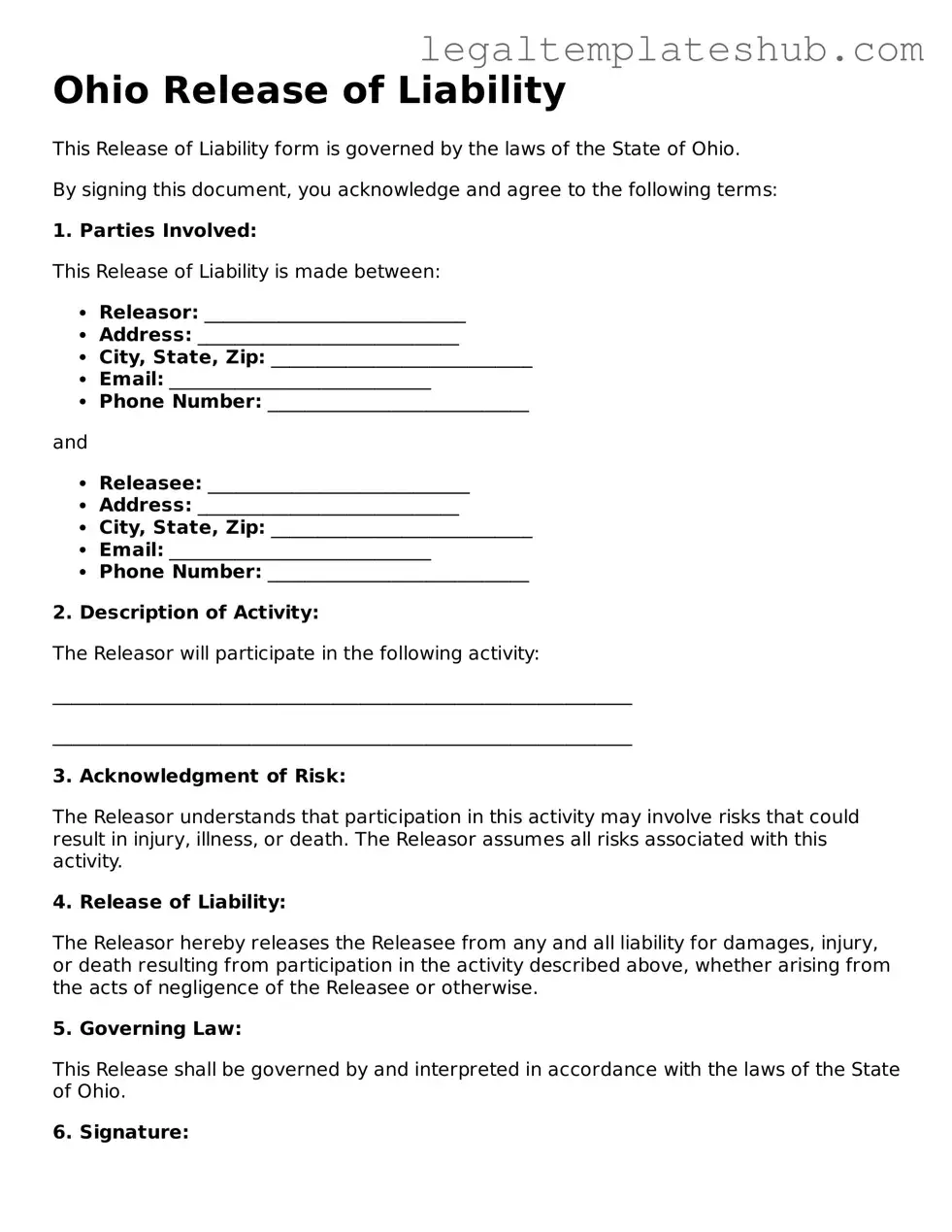Instructions on Filling in Ohio Release of Liability
After obtaining the Ohio Release of Liability form, you will need to complete it accurately to ensure it serves its intended purpose. This form typically requires specific information about the parties involved and the activities for which liability is being released. Following the steps below will guide you through the process of filling it out correctly.
- Begin by writing the date at the top of the form. This should reflect the date you are filling out the document.
- Fill in your name in the designated area. This is usually where the releasing party's name is required.
- Provide your contact information, including your address, phone number, and email address, if requested.
- Identify the party or organization that you are releasing from liability. This could be a business, individual, or group.
- Clearly describe the activity or event related to the release of liability. Be specific to avoid any ambiguity.
- Review any clauses or sections that outline the terms of the release. Make sure you understand what you are agreeing to.
- Sign the form in the space provided. Your signature indicates your agreement to the terms outlined in the document.
- Date your signature to confirm when you signed the form.
- If required, have a witness sign the form as well. This adds an extra layer of verification.
Once you have completed the form, ensure that all information is correct and legible. Keep a copy for your records before submitting it to the appropriate party or organization. This will help you maintain a record of your release of liability agreement.
